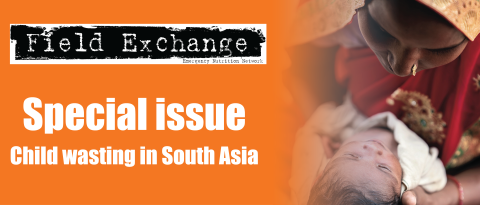Impacts of COVID-19 on childhood malnutrition and nutrition-related mortality
Research snapshot1
The COVID-19 pandemic will likely increase the risk of all forms of malnutrition as a result of rapid changes to the availability, accessibility and affordability of nutritious foods, declines in household incomes, and interruptions to health, nutrition and social protection services. The Standing Together for Nutrition consortium, a multidisciplinary consortium of researchers in the fields of nutrition, economics, food and health systems, is working to estimate the scale of malnutrition challenges related to COVID-19. Three modelling approaches have been used, analysing macroeconomic projections of impacts per capita on gross national income (GNI), microeconomic estimates of how predicted GNI shocks impact child wasting (using data on 1.26 million children from Demographic and Health Surveys conducted between 1990-2018), and the Lives Saved Tool estimates of health service disruptions and predicted increases in child mortality.
Initial findings suggest that even short-duration lockdown measures, combined with severe mobility disruptions and comparatively moderate food system disruptions, result in an estimated average 7.9% decrease in GNI per capita in low- and middle- income countries relative to pre-COVID-19 projections. It is estimated that this will result in a 14.3% increase in moderate or severe wasting prevalence in children under five years of age, which translates to an additional 6.7 million children with wasting in 2020, predominately in south Asia and sub-Saharan Africa. Coverage of nutrition and health services, however, is estimated to reduce by an average of 25% due to COVID-19 impacts. Without adequate treatment, there could be 128,605 (estimated range between 111,193 to 178,510) additional deaths in children under five years old during 2020. These projections emphasise the urgent need for adequate and timely action.
As a result of these worrying estimates and predictions, leaders of the four United Nations (UN) agencies responsible for child nutrition issued a commentary entitled Child Malnutrition and COVID-19: the time to act is now2, which calls for action in five areas:
- Safeguarding and promoting access to nutritious, safe and affordable diets;
- Investing in improving maternal and child nutrition through pregnancy, infancy and early childhood;
- Reactivating and scaling up early detection and treatment of wasting services;
- Maintaining provision of school meals for vulnerable children; and
- Expanding social protection to safeguard access to nutritious diets and essential services.
The UN agencies estimate that a minimum of US$2.4 billion is needed to protect vulnerable children, prevent and treat and malnutrition, and avoid child deaths due to the impact of COVID-19. Critically, agencies call for a swift response, with investments from governments, donors, the private sector and the UN to enable sustained action.
1 Headley, D. et. al. (2020). Impacts of COVID-19 on childhood malnutrition and nutrition-related mortality. The Lancet. Online. Published 27 July 2020. https://doi.org/10.1016/S0140-6736(20)31647-0
2 Fore, H.H., Dongyu, Q., Beasley, D.M. & Ghebreyesus, T.A. (2020). Child malnutrition and COVID-19: the time to act is now. The Lancet. Online. Published 27 July 2020. https://doi.org/10.1016/S0140-6736(20)31648-2


